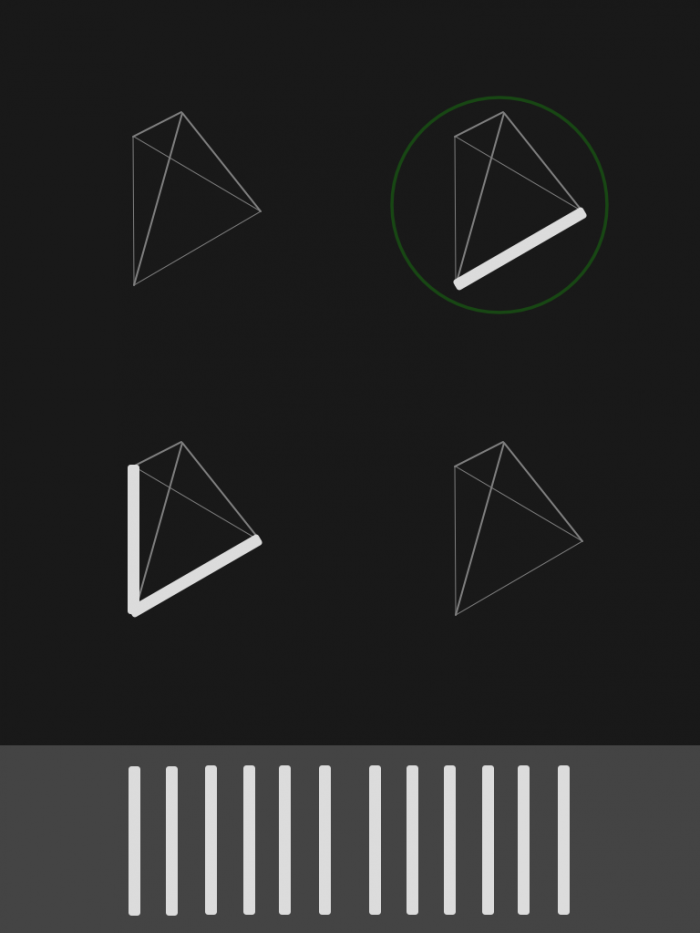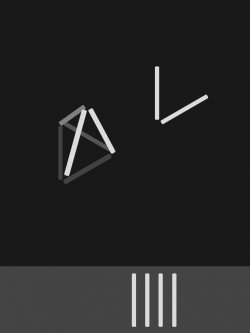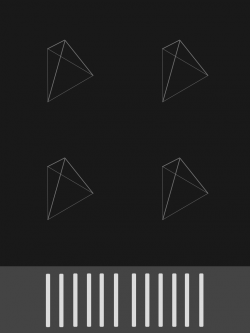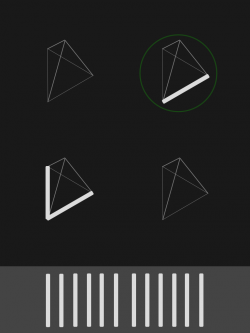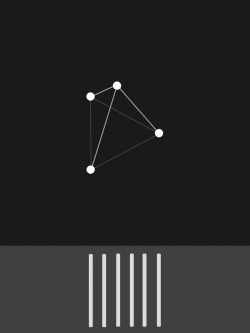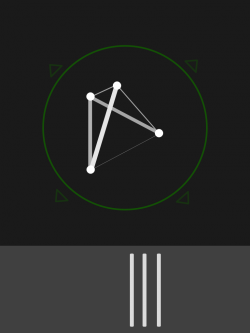30
03
.16
Digitopia Experience – Development
The Digitopia experience premiered on 12 February 2016 at Lakeside Arts Centre, Nottingham, alongside Digitopia the stage show. Digitopia is currently touring to 16 UK venues in total. It was developed in close collaboration with Nottingham-based Tom Dale dance company. Previous posts have covered the Digitopia Premiere and the collaboration with Tom Dale company. Here we reflect briefly on the development process.
From the early sketches, development of the experience proceeded rapidly through four significant design iterations, and lots of more subtle refinements along the way.
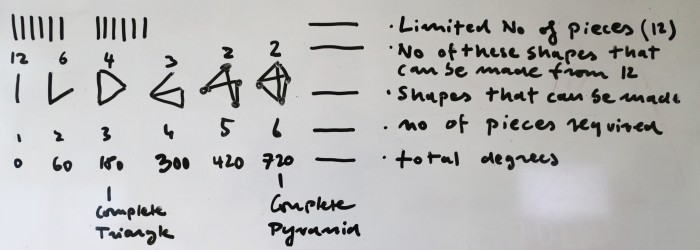
As shown in the above sketch, the original concept was to let people create geometrical shapes alongside a musical score that built up in response. As a first step, the visual concept was transferred into a digital graphics package to start evaluating the interaction design and look and feel more closely.
The images above show how the design progressed to include a set number of lines at the bottom, out of which constrained shapes would be assembled. The idea was still that lines would snap together in 3D to form pyramids: at this point, we had seen that pyramids were a prominent “on-stage” feature in the Digitopia dance show rehearsals, and we were keen to create strong visual links between the stage performance and the on-screen experience.
In the digital sketch, two pyramids were available for construction concurrently. We were still thinking that sound was created in relation to multiple variables, for example with regards to how many lines had been placed, how many shapes had been constructed and what shapes these were. The link between graphics and sound remained the focus for a little while and discussion of the Tonnetz was quite influential for us at that time.
Our discussions led to a second major iteration, which included more constraints but also added control over the quality of the sound, once a harmony was assembled.
As the images above illustrate, we concentrated on providing some geometrical guides in pyramid form. This was so that we did not have to explain the possible interaction too much. An effect wheel was also added, which we thought would be used to change effects in a two-dimensional effect space.
Returning to the relationship with the musical score, it became clear however how having multiple shapes to be “dressed up” would lead to a lot of complexity. Given that there would be up to 10 experiences running at the same time in the same room, we discussed at length how to best avoid an unpleasant cacophony emerging. We decided to simplify our concept, leading to the next prototype offering only one shape as shown below.
This design also reflected for the first time the two characters of the show. The design of the Digitopia stage performance had moved on to include Dotty and Hex, played by the two dancers on stage, which we now represented by dots and lines. We retained the idea that the user would move lines on to the canvas, then link up the four dots to create a single pyramid, with the soundscape building up as the interaction progressed. The effect wheel now clearly indicated a direction of travel, hopefully prompting people to pull it that way.
In a future post we will introduce the final stage and the final design.
The Digitopia experience is currently touring to 16 UK venues in total.
The Digitopia team: Tony Glover, Adrian Hazzard, Holger Schnädelbach, Laura Carletti, Ben Bedwell
Tags:
children,
Digitopia,
interaction,
interactive design,
Media Flagship,
performing data,
theatre,
visitor engagement





